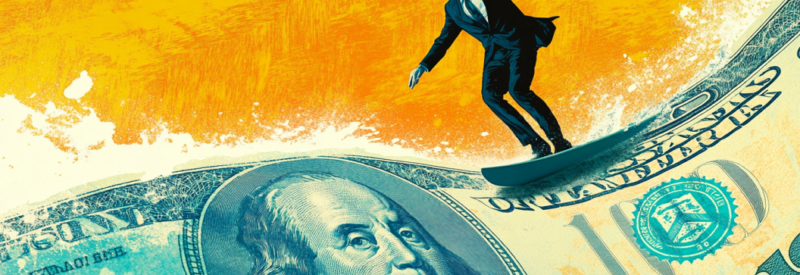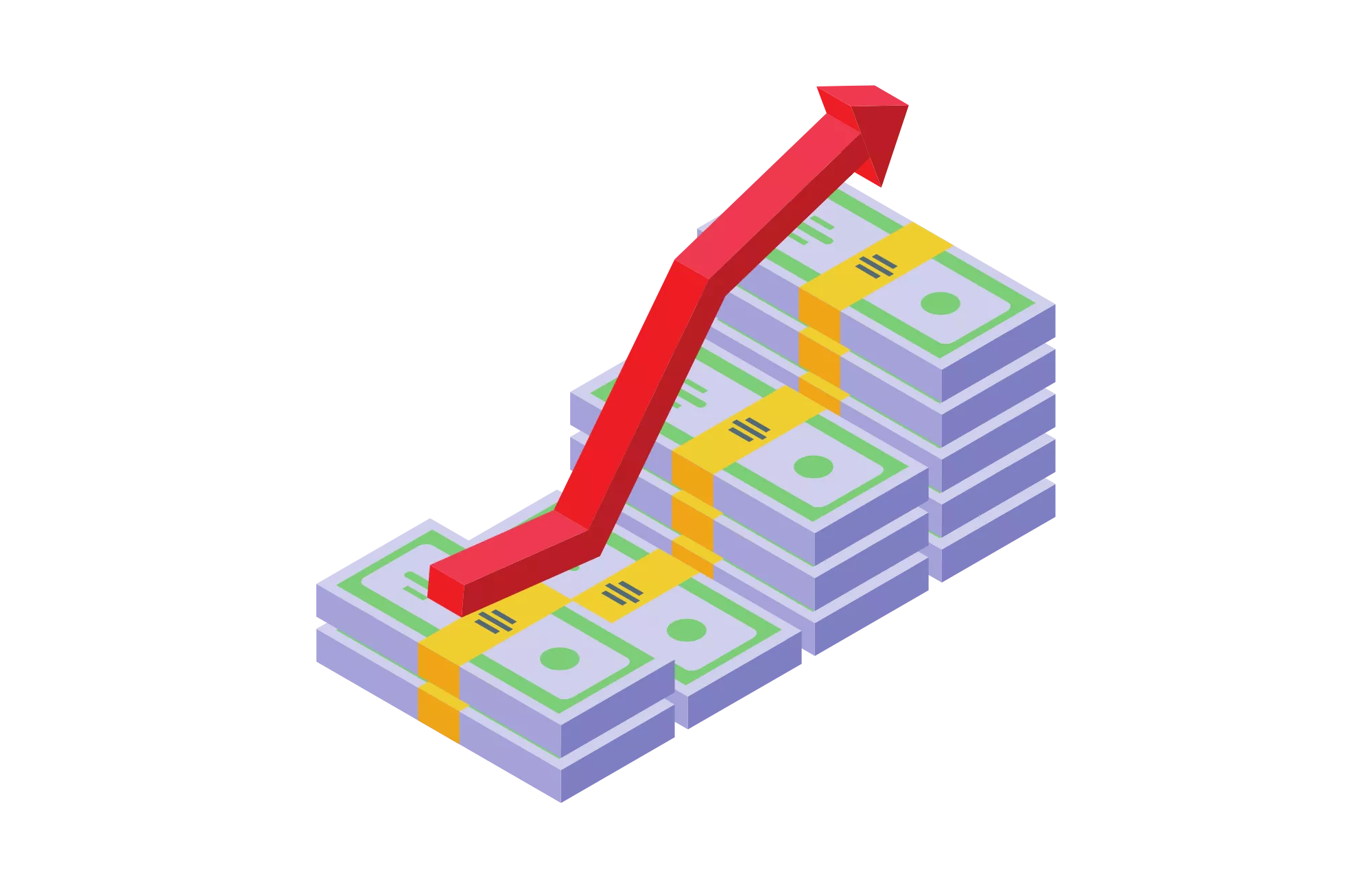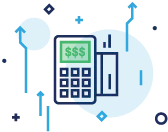TABLE OF CONTENTS
- What is a Cash Discount Program, and is a Cash Discount Legal?
- The Benefits of Offering a Cash Discount Program
- So Then, What is a Surcharge Program?
- The Drawbacks of Offering a Surcharge Program
- The Difference Between Surcharge and Cash Discount Programs
- Cash Discount and Surcharge Programs Are Not Right for Everyone
- Alternative: Build Fees Directly into Your Costs
- How to Select The Best Option for Your Business
With the rising popularity of legal cash discount and surcharge programs, it’s obvious why many business owners find this tactic appealing. And while offering credit card payments in your business seems like a no-brainer, the convenience of getting a merchant account for this perk comes at a cost. Credit card processors charge fees for each transaction you initiate. This means that platforms are taking a slice of your earnings. If you’re not willing to front the cost of the transaction, there are two ways to offset the fees: cash discount programs and surcharge programs.
For those who operate on thin margins, passing this cost onto the consumer seems like a natural conclusion. But charging your customers for credit card processing fees isn’t as easy as you think—in fact, it was once illegal. So, as a business owner, how can you spot the difference between cash discounts and surcharge programs?
What is a Cash Discount Program, and is a Cash Discount Legal?

A cash discount is when a merchant offers a discounted price to a customer choosing to pay with physical cash for an item or service as opposed to a credit card. One primary reason business owners use this type of program is that cash is easier to process over credit cards because there is no middleman, such as an issuing bank or credit card processing company. In addition to that, a cash discount is totally legal to use in your business.
Many business owners find credit card processing fees to be frustrating, so making cash payments is a way around this issue. A cash discount program may also work as an incentive for customers to spend more since they’re receiving a small monetary discount.
The Benefits of Offering a Cash Discount Program
There are a few main points to consider and understand before learning how to offer your customers a cash discount.

Eliminate friendly fraud with a cash discount
One of the major drawbacks to accepting credit card payments is the risk of friendly fraud or chargebacks. These pesky charge reversals are not only costly but also harmful to your business in the long run. Each time a merchant initiates a chargeback for any reason, it reflects negatively on your business. Rack up too many of them, and you’ll receive a high chargeback ratio, which could result in the need for a high-risk merchant account.
The good news is with a cash discount program, you’re able to completely eliminate the worry of chargebacks. The way a chargeback occurs is through the customer’s processing bank. When dealing solely with cash, you’re cutting out the bank’s influence entirely. Therefore, by offering your customers cash discount processing, you’re also ensuring the transaction runs smoothly.

Cash discount processing lowers account fees
The biggest purpose of a cash discount is that you don’t have to pay merchant account payment processing fees. The payment you receive in cash goes directly into your cash register, never incurring any added fees. No percentages. No rates. What you see is what you get.
For smaller businesses or just those that process smaller transactions, this could mean a great deal of savings. Credit card processing fees can range from anywhere between 1.15 percent to 3.15 percent. This figure does not include a flat fee that’s sometimes charged for each transaction. And those charges can seriously add up. A cash discount program saves you money where merchant account fees would normally be applied.

Cash discounts diversify (and attract) growth
A cash discount can become a marketing tool that your business can purposefully leverage to attract new customers. Customers who walk into your business for the first time may be more likely to return because of the added benefit. After all, you’re giving a small discount to buy items they might have otherwise bought at full price.
Programs such as cash discounts are generally appreciated by customers. They don’t deny or limit ways to pay, which is great for your bottom line. In addition, they may give card-wielding consumers a reason to come back with cash in the future.
So Then, What is a Surcharge Program?
A surcharge program involves charging a fee to customers who opt to use credit cards. By charging credit card users extra money, you can recover the processing fee directly from your customers. This ensures that you can charge the base price for a product or service without having to factor in losses from credit card transactions. By implementing a surcharge program, you are distributing the cost of credit card processing fees to your customers.
A surcharge program does not affect debit cards, cash payments, or corresponding digital payments. It can only be applied to credit card payments where the credit card processing fees would apply. However, it does come with some stigma worth considering before you implement it.
The Drawbacks of Offering a Surcharge Program
Just like offering a cash discount program to customers, surcharge programs come with their own risks and drawbacks to consider.

Some surcharge programs are frowned upon
While this is a widespread practice with many business owners, it’s frowned upon by credit card companies. Many credit card issuers pressure regulators to prevent surcharges. They don’t want credit card users to bear the cost of the transaction. In some states, these regulations prevail, and business owners face regulations that prevent them from utilizing traditional surcharging methods. At present, you cannot use a surcharge program in Massachusetts and Connecticut.

Heavy regulations on surcharges
If you do decide to proceed with a surcharge program, you must notify your credit card processor and credit card association 30 days before you begin charging. Also, you can only add a surcharge to a credit card and not a debit card. Merchants are now limited to charging a maximum of 3% to consumers, as per the recent change in Visa’s 2023 surcharge regulations. That percentage must be the same for all credit cardholders, regardless of the type of credit card. It is also best practice to let your customers know about the additional surcharge that will appear. It must be a separate line item and easily identified as a surcharge on an itemized statement or receipt.
Each card association has its own rules, so it’s important to research the guidelines of each company before you begin surcharging customers.
The Difference Between Surcharge and Cash Discount Programs
In theory, there’s not much of a difference between these two fee-recovery methods. With a surcharge program, you’re increasing the cost for credit card users, whereas with a cash discount program, you’re decreasing the cost for cash users.

The primary difference is the amount of compliance.
With a surcharge program, you have to jump through hoops to begin charging consumers for credit card transactions. In fact, in some states, you won’t be able to use surcharges at all!
Surcharge programs are limited and do not apply to debit cards, cash purchases, ACH payments, etc. When implementing this type of charge, merchants typically vary the percentage of the surcharge depending on the purchase amount and its added pre-tax. Merchants add this fee because processing credit cards cost more, causing profit margins to be slimmer on low-cost items.
Surcharging can be complex and is not legal in all 50 states. As such, it’s important to learn the laws carefully if you’re thinking about adding a surcharge.
But it’s not just the compliance and regulations that cause issues with surcharging. Because surcharge fees are not very common, customers might be offended by the additional cost tacked onto their purchase.
It’s often a better idea for businesses and service providers to instead offer a 100% legal cash discount for customers. This way it is a reduction in price rather than an additional fee. Simply highlighting the cost-saving measures of using cash paints the transaction in a better light and makes customers more willing to accept it.
Cash Discount and Surcharge Programs Are Not Right for Everyone
As you can see, offering incentive programs provides many benefits for the merchant. However, there are a few things to consider. Still, offering a cash discount program is not always the right solution. Here are a few common problems you might encounter:
- Credit card use may still be high. It is often more convenient for customers to use their credit cards. Depending on the products or services you are providing, it may be hard for the customer to pay in cash.
- Some people may view the cash discount program as a penalty for using their card to pay. While this is not based on truth, you may have to explain to your credit card customers why you’re offering the discount. This learning curve may be difficult to overcome when explaining it to customers who are unfamiliar with the program or with employees who struggle to understand the perks.
- Some customers might feel cheated by the surcharge. It’s possible that some customers will become upset or even refuse to complete the purchase because of the added fee.
- Accepting cash is more work. You will have to go to the bank to physically deposit your cash payments. The employees will also need to be comfortable handling cash and providing change to the customer. And you will have to be sure that you have an adequate amount of change on hand for a possible increase in cash usage.
- It is a possible security risk to accept more cash. Thieves could take money out of the drawer, you could lose it somehow, or any number of disasters could happen that cause you to lose the physical cash that you earned.
- Typically, the amount that people spend on a credit card is higher. There are several studies that show people tend to spend more when they use a credit card rather than cash. Cash is somewhat limiting, whereas a card payment provides total access to the customer’s bank account.
- Surcharges might be banned in your state. If you’re in a heavily regulated state where surcharges are illegal, you’ll have to consider another method to cover your credit card processing fees.
Alternative: Build Fees Directly into Your Costs
If you don’t want to use either of these programs but still want a way to combat increased credit card processing fees, there may be another way.
Simply raise the cost of all of your products or services. Regardless of payment type or transaction amount, you can break even by making up for merchant account fees.
To do this, use the credit card and cash transaction data you have collected from your business. By assessing the average value of credit card transactions in comparison to cash transactions, you can begin designing your pricing to cover the costs of credit card fees.
Many of your customers won’t even realize the price change. And even if they do, it is an easily explainable and viable reason to do so. Listen to your business and gauge how these changes will affect it to see if any of these options are right for you.
How to Select The Best Option for Your Business
It can be hard to decide between a cash discount program and a surcharge program. And the answer isn’t so cut and dry. There are many subjective factors to consider before implementing either of these programs into your operations.
It may be helpful to see what your competition is doing to combat higher credit card processing fees. Are they requiring a minimum purchase amount to use a credit card without a fee? Are they straight out applying a surcharge onto card transactions? Have they raised their prices to combat the fees? Or none of the above?
If you have already considered starting a cash discount program and are ready to implement it immediately, there is no better time than the present to get started. Read the short guide below to save on credit card processing fees and recover some of that lost revenue immediately.

Set up a legal cash discount program NOW
Offering a discount for cash payment is a great way to get more customers to pay with cash rather than cards. Setting up a cash payment program is not an overly complex process. However, it’s important to work with a merchant processing company that is adept at retail businesses to ensure all respective laws are followed. Here are the steps necessary to implement the program:
- Decide on the discount amount – You will need to determine the size of the discount offered for cash (it’s usually a percentage of the purchase price). It’s important to take into account your average profit margin per item as well as the percent saved on credit card processing. Many merchants work with tighter margins because of eCommerce competition. You don’t want to lose money by offering a cash discount.
- Determine how the program will work – Will your cash discount apply to actual cash-only transactions, or will it also apply to gift cards? It’s often a good idea to include gift cards if you already use them because it’s another incentive for customers to buy prepaid cards which can lead to new customers that haven’t previously frequented your business. Consult your business’ monthly statements to determine if this makes sense for you before you make any concrete decisions.
- Explain the program clearly to employees – Each team member should know exactly how to explain the program to customers as questions come rolling in. They may also use this as a way to sell more products. At the point of purchase, it may be helpful to acknowledge the discount, which will leave customers on a happy note as they leave your store.
- As well as your customers – Signage is important to implementing a new program, because it may not be in your best interest to have any surprises at checkout. A small sign at the entrance and at the checkout counter will help inform your customers and remind them that there are more beneficial ways to pay than by credit card.
- Ensure that your Point of Sale equipment reflects the program pricing – The program pricing should not be manually entered. This could lead to miscalculations that would be detrimental to your business. Make sure that your terminals are programmed with the surcharge or cash discount percentage, and go about your business without worry.
In today’s market, it’s more important than ever to pinpoint ways to be more competitive. A good place to start is by saving on credit card processing fees. It’s worth speaking to a reputable merchant service provider who can help your business save costs. Merchant service providers formulate the best payment processing programs to increase revenue for all types of businesses!







